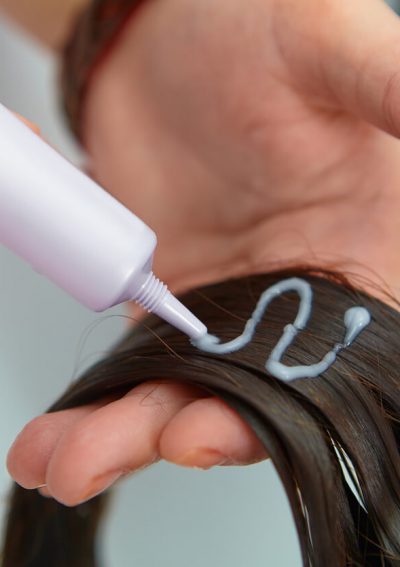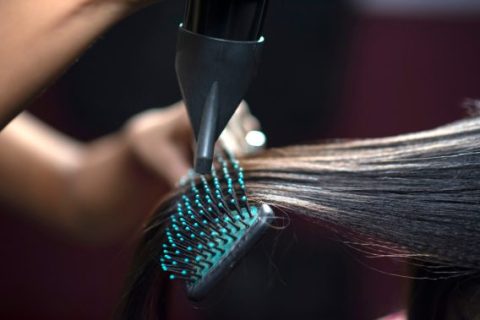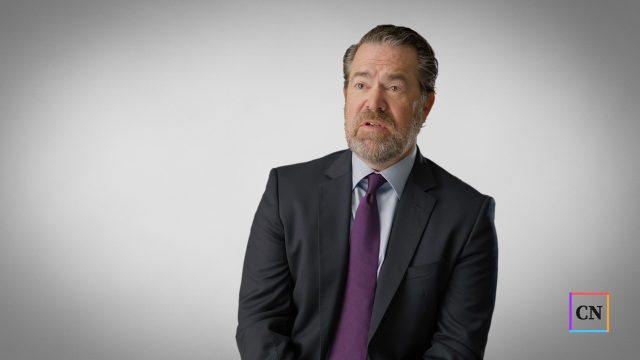Chemical Hair Straightener Lawsuits
Women may file chemical hair straightener lawsuits if they used these products and later developed uterine, endometrial and ovarian cancer. Lawsuits say chemical straighteners and relaxers increase the risk of cancer and that manufacturers failed to warn the public.

Latest Chemical Hair Straightener Lawsuit Updates
Hair straightener lawsuits have been filed against familiar companies like John Paul Mitchell, L’Oreal, Revlon, Sally Beauty Supply and other chemical hair straightener manufacturers. The suits claim that hair relaxer manufacturers failed to warn consumers that the products contain endocrine-disrupting chemicals (EDCs) linked to uterine, endometrial and ovarian cancers.
As of April 2025, 9,936 hair straightener lawsuits were pending in multidistrict litigation (MDL) in the U.S. District Court of the Northern District of Illinois. Though litigation in MDL 3060 is in its early stages, lawyers expect many more people to file lawsuits.
The case is in its early stages, with the first bellwether trial expected in 2025. Attorneys are still accepting hair straightener cases.
-
March 2025:
The court has outlined a bellwether selection schedule, giving both sides until the end of April to each select 20 cases to be a part of the bellwether pool. The actual trials themselves, however, will not be taking place for some time. The court is set to select the first group of cases to serve as bellwether trials in February 2026.
-
February 2025:
Plaintiffs have earned a win in the hair relaxer MDL after the judge overseeing the lawsuits rejected motions to dismiss from several defendants. The judge noted that some of the defendants' arguments in favor of dismissal were "undeveloped and unpersuasive."
-
January 2025:
The court has ordered representatives for plaintiffs and defendants in the MDL to each select 20 cases for bellwether discovery, for a total of 40. Those 40 cases will later be narrowed down to 12 that will serve as the trial pool.
-
December 2024:
Plaintiffs and defendants in the hair relaxer MDL say that they are still unable to reach an agreement on a bellwether process. The two sides have attempted to reach an agreement for months.
-
October 2024:
Two test trials for the hair relaxer multidistrict litigation are set: the first on November 3, 2025, and the second on February 2, 2026. These bellwether trials will gauge jury reactions to similar cases, helping both sides assess the strength of their arguments.
-
August 2024:
Plaintiffs in the MDL have submitted their responses to motions to dismiss from several defendants. In their response to John Paul Mitchell Systems, plaintiffs said the motion to dismiss is “based on a gross misunderstanding of the master complaint.”
-
July 2024:
The FDA delayed a proposed ban on formaldehyde in hair care products, with the timeline for its release now uncertain. This follows several rescheduled target dates and ongoing health concerns linking formaldehyde to cancer. Advocates have long pushed for this ban to protect consumers and salon workers. This month, a Georgia appeals court also rejected L'Oréal’s bid to dismiss a lawsuit linking its products to uterine fibroids, allowing the lawsuit to proceed.
-
June 2024:
L’Oreal, SoftSheen-Carson and Strength of Nature lost an appeal to dismiss a Kiara Burroughs’ chemical hair relaxer lawsuit that claims the companies failed to warn the public about toxic chemicals in their products that can cause uterine fibroids. Burroughs’ case is a Georgia state court case. So far, there aren’t any trial dates for the cases in the Illinois MDL. To improve efficiency, Maura Grossman was appointed to help manage the proceedings, and a new document filing system was introduced to reduce delays from the federal electronic filing system.
-
November 2023:
Lawyers on both sides are trying to determine how to conduct discovery.
-
October 2023:
Extensive news coverage broke of a proposed FDA rule change to ban the use of formaldehyde and formaldehyde-releasing chemicals in hair straighteners, bringing renewed attention to health risks and legal responsibility, and prompting more case filings.
-
August 2023:
The number of pending cases decreased from 295 to 275, but active cases have grown significantly since August.
-
February 2023:
The Panel on Multidistrict Litigation transferred hair straightener lawsuits to the newly formed MDL 3060 in the Northern District of Illinois.
-
January 2023:
Tamara Sigars filed a lawsuit that claimed L’Oreal and other companies’ hair relaxers caused her to develop ovarian cancer.
-
November 2022:
Plaintiffs’ lawyers asked the U.S. Judicial Panel on MDL to consolidate all of the chemical hair straightener lawsuits in multidistrict litigation in Illinois.
When the Illinois MDL was first formed, it started with nine individual injury cases and has since grown to include more than 9,800 plaintiffs. Lawyers expect this litigation to grow because millions of people have used these products.
Why Are People Filing Chemical Hair Straightener Lawsuits?
People are filing lawsuits against chemical hair straightener companies after a 2022 National Institutes of Health (NIH) study found women who used chemical hair straighteners were more than two times more likely to develop uterine cancer than those who didn’t use them. Defendants include SoftSheen-Carson, Strength of Nature, L’Oreal, Namaste and others. The litigation is currently focused on uterine, endometrial and ovarian cancer, though this could later include more injuries if more evidence links straighteners to them.
Uterine cancer rates among Black women have been rising, and researchers say chemical straighteners may be to blame. About 60% of participants in the study who reported using hair straighteners were Black women.
People are filing lawsuits for compensation, including medical bills, pain and suffering and lost wages. Some women who filed lawsuits have had to have hysterectomies to treat uterine cancer, preventing them from having children.
Chemical Hair Straightener Lawsuit Settlement
Some lawyers predict that a settlement for the hair straightener lawsuits could range from $100,000 to $1.75 million, mainly because of claims related to cancer. These estimates are based on past cases involving similar claims about other products.
Health Claims in Chemical Hair Straightener Lawsuits
Chemical hair straightener lawsuits claim chemicals in these products have caused women to develop uterine cancer, breast cancer, endometriosis and fibroids. Studies have linked endocrine-disrupting chemicals (EDCs) in hair straighteners to various side effects and health problems such as cancer, endometriosis and uterine fibroids. The risk of these conditions increases with frequent use, and many plaintiffs in hair relaxer lawsuits have used these products for years.
Researchers define frequent use as more than four times a year or every five to eight weeks. Dangerous chemicals in hair straighteners include phthalates, parabens and a toxic chemical called DEHP.
Uterine Cancer
Hermania E. Bates filed a chemical hair straightener lawsuit against L’Oreal, SoftSheen-Carson and other hair straightener manufacturers in February 2023 after she developed uterine cancer. According to her lawsuit, “Ms. Bates’ cancer diagnosis was directly and proximately caused by her regular and prolonged exposure to phthalates and other endocrine disrupting chemicals found in Defendants’ hair care products.”
In the 2022 NIH study, researchers looked at data from 33,947 women aged 35 to 74. Women who reported using hair straighteners had higher incidence rates of uterine cancer. Women who used the products more than four times in 12 months had more than double the risk.
Endometrial Cancer
Researchers believe hormonal issues may contribute to endometriosis. According to some studies, phthalates, parabens and EDCs like those found in chemical hair straighteners and hair dyes could disrupt hormones and increase the risk of endometriosis.
A study published in the 2018 Journal of Human Reproductive Sciences found high levels of phthalates in women diagnosed with endometriosis. Lawsuits claim these chemicals can also increase the risk of endometrial cancer.
Uterine Fibroids
According to claims in chemical hair straightener lawsuits, “uterine fibroids, or uterine leiomyomata, are associated with phthalate metabolites and BPA found in hair care products.” A November 2022 study by Northwestern Medicine found women with high exposures to phthalates such as DEHP and its metabolites have a higher risk of developing symptomatic fibroids. Researchers found DEHP activates certain hormone receptors and causes fibroid tumor growth.
Before this study, researchers established a link between uterine fibroids and phthalates. Scientists also discovered DEHP can pass from a mother to a baby.
What Brands Have Been Named in the Chemical Hair Straightener Lawsuits?
Plaintiffs have filed lawsuits against L’Oreal, other hair relaxer makers, and popular brands such as Soft & Beautiful and Dark & Lovely.
- Strength of Nature Global, LLC
- Soft & Beautiful
- Motions
- TCB Naturals
- Just for Me
- Namaste
- Olive Oil Girls
- L’Oreal
- Dark & Lovely
- Optimum
In addition to individual injury lawsuits, defendants also face a class action in Illinois court that demands a refund for the full purchase price of the products. The lawsuits claim, “The presence of EDCs in Defendants’ Toxic Hair Straightener was not disclosed in the products’ label, in violation of state and federal law.”
Who Qualifies to File a Chemical Hair Straightener Lawsuit?
You may qualify to file a chemical hair straightener lawsuit if you used a chemical hair straightener or relaxer and were later diagnosed with uterine cancer, breast cancer, uterine fibroids or endometriosis. A lawyer can determine if you qualify. There may be time limits to file a claim, so speak with an attorney as soon as possible to see if your case is eligible.
A lawyer may ask questions about the experience with chemical hair straighteners. Have receipts and information about the diagnosis ready to share. If you are unable to provide documentation, a lawyer may be able to help you obtain medical records.
13 Cited Research Articles
Consumernotice.org adheres to the highest ethical standards for content production and references only credible sources of information, including government reports, interviews with experts, highly regarded nonprofit organizations, peer-reviewed journals, court records and academic organizations. You can learn more about our dedication to relevance, accuracy and transparency by reading our editorial policy.
- United States Judicial Panel on Multidistrict Litigation. (2025, April 1). MDL Statistics Report - Distribution of Pending MDL Dockets by Actions Pending. Retrieved from https://www.jpml.uscourts.gov/sites/jpml/files/Pending_MDL_Dockets_By_Actions_Pending-April-1-2025.pdf
- U.S. District Court for the Northern District of Illinois. (2025, March 5). Case Management Order No. 15. Retrieved from https://ecf.ilnd.uscourts.gov/doc1/067132076974
- U.S. District Court for the Northern District of Illinois. (2025, February 19). Memorandum Opinion and Order. Retrieved from https://ecf.ilnd.uscourts.gov/doc1/067131983240
- U.S. District Court for the Northern District of Illinois. (2025, January 31). Memorandum Opinion and Order. Retrieved from https://ecf.ilnd.uscourts.gov/doc1/067131887955
- Lovelace, B. and Essamuah, Z. (2024, July 19). FDA Once Again Pushes Back Proposal to Ban Cancer-Linked Formaldehyde in Hair Relaxers. Retrieved from https://www.nbcnews.com/news/nbcblk/fda-delays-ban-formaldehyde-hair-products-cancer-timeline-uncertain-rcna162565
- U.S. Judicial Panel on Multidistrict Litigation. (2023, February 6). Transfer Order. Retrieved from https://www.jpml.uscourts.gov/sites/jpml/files/MDL-3060-Transfer_Order-1-23.pdf
- Office of Information and Regulatory Affairs. (2023). Use of Formaldehyde and Formaldehyde-Releasing Chemicals as an Ingredient in Hair Smoothing Products or Hair Straightening Products. Retrieved from https://www.reginfo.gov/public/do/eAgendaViewRule?pubId=202304&RIN=0910-AI83
- Chang, C-J et al. (2022, December 8). Use of Straighteners and Other Hair Products and Incident Uterine Cancer. Retrieved from https://pubmed.ncbi.nlm.nih.gov/36245087/
- Samuelson, K. (2022, November 14). Uterine Fibroid Growth Activated by Chemicals Found in Everyday Products. Retrieved from https://news.northwestern.edu/stories/2022/11/uterine-fibroid-growth-activated-by-chemicals-found-in-everyday-products/
- Samuelson, K. (2022, November 14). Uterine Fibroid Growth Activated by Chemicals Found in Everyday Products. Retrieved from https://news.feinberg.northwestern.edu/2022/11/14/uterine-fibroid-growth-activated-by-chemicals-found-in-everyday-products/
- Howard, J. (2022, October 24). US Woman Files Lawsuit Against L’Oréal, Claiming Chemical Hair Straightening Products Are Linked to Her Cancer. Retrieved from https://www.cnn.com/2022/10/24/health/hair-straightening-products-lawsuit
- National Institutes of Health. (2022, October 17). Hair straightening chemicals associated with higher uterine cancer risk. Retrieved from https://www.nih.gov/news-events/news-releases/hair-straightening-chemicals-associated-higher-uterine-cancer-risk
- Nazir, S. et al. (2018). Women Diagnosed with Endometriosis Show High Serum Levels of Diethyl Hexyl Phthalate. Retrieved from https://www.ncbi.nlm.nih.gov/pmc/articles/PMC6094529/
Calling this number connects you with a Consumer Notice, LLC representative. We will direct you to one of our trusted legal partners for a free case review.
Consumer Notice, LLC's trusted legal partners support the organization's mission to keep people safe from dangerous drugs and medical devices. For more information, visit our partners page.
866-461-6220




